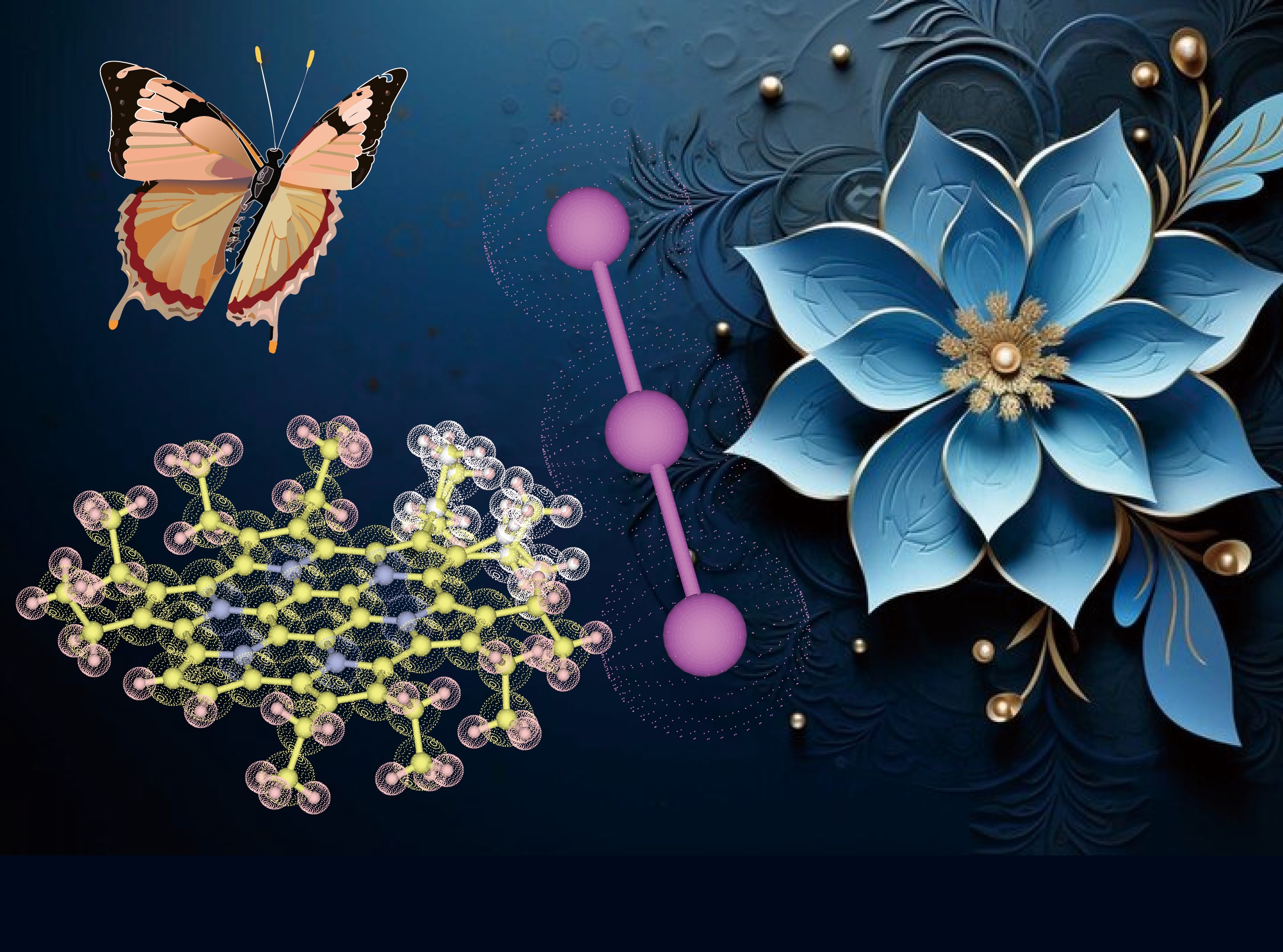Delocalization beyond π-conjugation
Hyperconjugation between aromatic rings and their side chains to stabilize unpaired electrons
A radical cation salt of new aromatic compound produced a molecular conductor with three-dimensional conduction pathways. The conduction pathways were based on intermolecular interactions via ethyl groups, which demonstrated that unpaired electrons move in various directions in the solid passing through both aromatic rings and ethyl groups. Such features were related to doubly degenerated narrow bands at the Fermi level, making it a totally different conductor from any known conductors.
We pioneer the use of an aromatic hydrocarbon derivative to break through the limitation of molecular conductors. The constituent molecules for conductors have been practically limited to planar π-conjugated molecules. Such molecules frequently form columnar structures, when they possess unpaired electrons for electrical conduction. To extend the intra- and intercolumnar interactions, heteroatoms such as chalcogen atoms are often introduced at the periphery of the constituent molecules. Yet this strategy inevitably encounters difficulties, as such molecules would be increasingly difficult to synthesize with increasing the number of heteroatoms and the molecular weights, while they would still produce highly anisotropic conductors. They often behave insulators in the form of powder and thin films because of the anisotropy. Thus, a different strategy for developing molecular conductors has been desired for a long time. The molecule in this work features its three-dimensionally delocalized unpaired electrons extended over a planar aromatic skeleton and its surrounding upright alkyl chains. Thus, in the solid state, they spontaneously form a three-dimensional interaction network serving as conduction pathways. This approach is widely applicable to other electronic and magnetic materials to change the design of molecular functional materials.
Reference URL: https://doi.org/10.1039/d5tc01367d
Bibliographic Information
Metallic crystals with a three-dimensional narrow band based on an aromatic hydrocarbon derivative, Misako Ikeda, Yoshiki Sasaki, Yoshino Fujikawa, Shigeki Mori, Kensuke Konishi, Keishi Ohara, Haruhiko Dekura, Hiromichi Toyota, Masayoshi Takase, Ami Mi Shirai, Yuta Murotani, Ryusuke Matsunaga and Toshio Naito, Journal of Materials Chemistry C, 13, 12650—12656, doi:10.1039/D5TC01367D, 2025 (May 20).
Fundings
- Japan Society for the Promotion of Science(JSPS) KAKENHI Grant Number 22H02034, 24K21755, 23H03964, and 24K01470
Media
-

Like pollen distributed via petals instead of stamen
Flower-like fused rings with side chains featured by fully delocalized unpaired electrons up to the end of the side chains
credit : The copyright is owned by the Royal Society of Chemistry
Usage Restriction : With explicit citation of the original article; http://xlink.rsc.org/?DOI=D5TC01367D or https://pubs.rsc.org/en/journals/journalissues/tc -

Clouds of conduction electrons spread over like a lotus flower
Lotus-flower-like fused rings with side chains featured by fully delocalized unpaired electrons up to the end of the side chains
credit : The copyright is owned by Toshio Naito
Usage Restriction : Please get copyright permission
Contact Person
Name : Toshio Naito
Phone : +81-89-927-9604
E-mail : tnaito@ehime-u.ac.jp
Affiliation : Ehime University
